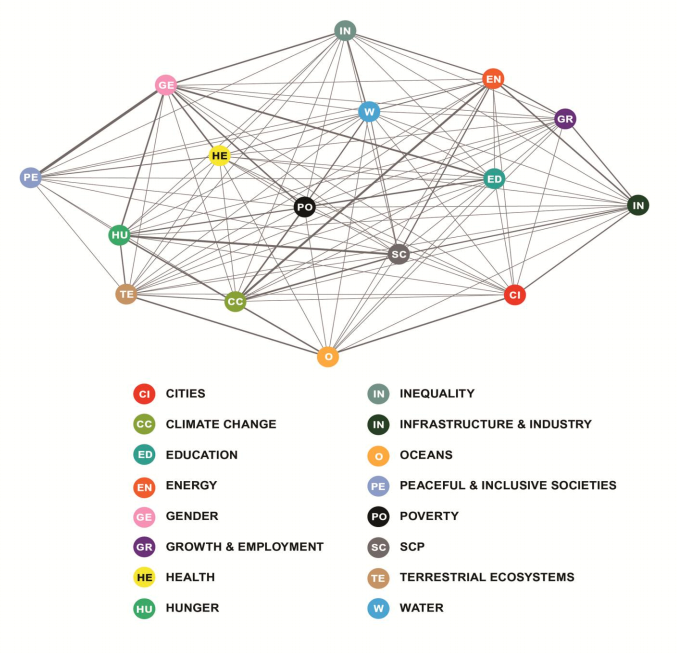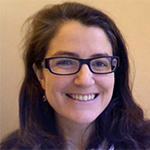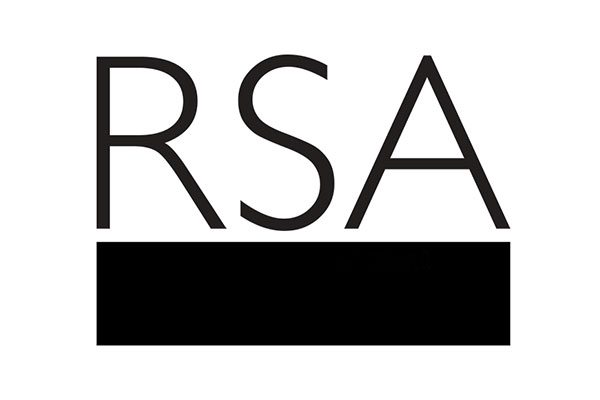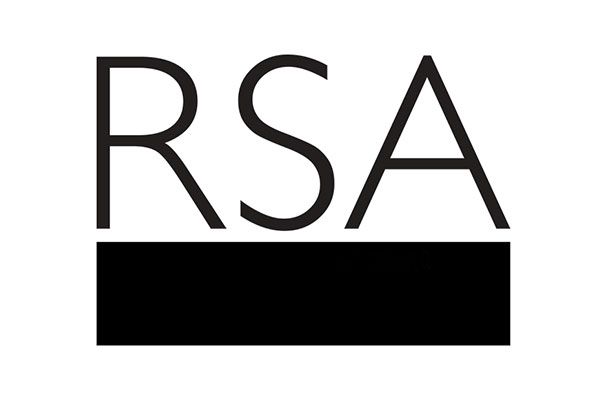Two years after the adoption of the Global Goals (also called the Sustainable Development Goals or SDGs), there are still too few champions, ambassadors and implementers of this ambitious agenda. There are also too few partnerships for the goals being showcased, to inspire others and invite further action.
Setting the scene
Our complex, interconnected and fast-changing world requires new ways of thinking and working, new approaches to shaping the future.
As shown by the new social, economic and political realities affecting us all, within and beyond national borders, our world is increasingly complex. For the many years to come, there will be multiple factors which will continue to disrupt efforts of numerous actors to deliver effective positive change. Key issues at hand are messy and interlinked. How to secure essential access to food, energy and water to a growing population? How to tackle stubborn inequality? What about climate change, a key threat to both people and the planet? We know that there will be more and more people living in cities; what are the implications in terms of infrastructure and health? How can we make sure we don’t carry on wasting precious, finite natural resources? How to put an end to conflict and violence?
These issues, with their global and interlinked ramifications, represent both threats and opportunities to effective transformational change. Individual lives are increasingly interconnected, facing the same risks. We only need to look at the long-term impact and systemic nature of the financial and refugee crises. There is also now a convergence of worlds, with businesses being asked to play an increasingly important and positive role in society, and NGOs now looking at innovative business models and ways of engaging with business. Cross-sector conversations are now becoming broader and more strategic - well beyond traditional CSR and fundraising concerns.
It is against this backdrop that the Global Goals for Sustainable Development were adopted in September 2015. The successors to the Millennium Development Goals are both highly ambitious and transformative. They have also been designed to integrate the three key dimensions of sustainable development: social, economic and environmental. Reflecting an inclusive and universal approach to development, the new goals were defined as a result of multiple level conversations and extensive consultations among numerous stakeholders, over a period of over three years. The new sustainable development agenda invited citizens to imagine and design a new world.
Indeed, the new Global Goals are aimed at a much larger and diverse audience, and calls for urgent individual and collective action - at scale.
Development, previously reserved to a close, exclusive circle of experts, has now become everyone’s concern, due to the scope and scale of the new agenda to be delivered by 2030. The 17 Sustainable Development Goals (“SDGs”) include and integrate cross-cutting issues like peace, inequality, sustainable consumption and production patterns, cities and climate change. They are ambitious in nature and envisage the eradication (as opposed to the significant reduction) of key human development challenges such as hunger, poverty and preventable child deaths.
Managing complexity and diversity through systems thinking and multi-stakeholder partnerships
If the Sustainable Development Goals are now clearly universal, since they tackle issues of a global nature, affecting all countries, all people and the whole planet, and transformative (because of the sheer magnitude and ambition of the agenda), what about the need for a full integration of these multiple dimensions of development, to avoid the fragmented approach that was so criticised in the review of the Millennium Development Goals?
The views of the scientific community have been invited on this thorny issue. Looking in detail at the 17 SDGs and their 169 targets, they offered this representation as a complex, interlinked system.

Global Sustainable Development Report - 2015 Edition (UN, 2015)
This picture shows the extent to which actions on a specific goal or target are intrinsically linked to other goals and targets - making the case for continuing to think and act in silo, in a fragmented manner, very weak.
The Global Goals’ scope, scale and interlinkages raise some key questions about the effective means of implementation.
How can we ensure that the multiple agents of positive change can effectively support each other and move in the same direction? How can we measure the impact of collective action? The emergence of new actors in the development space (with an increasing role of the private sector) may introduce new competition and tensions. How can we best manage this diversity of intentions, interests and actions?
SDG 17, which addresses the “how to” question, focuses on creating an enabling environment for sustainable development. This includes the mobilisation of and widened access to key resources (through trade, finance, technology…). The goal also recognises and seeks to address both capacity-building and systemic issues, with multi-stakeholder partnerships representing a key means of effective implementation. Working in partnership with a wide range of stakeholders, across various cultural, disciplinary and sectoral boundaries requires specific competences and skills, including open-mindedness, empathy, listening, influencing, negotiation, brokering, alongside strategic and critical thinking.
In order to attain the Goal Goals for a prosperous, equitable and sustainable world, we need to invest time and energy in accelerating learning and dialogue on what works and why, think at the systems level and in the long-term, and work together - across multiple boundaries.
If you are interested in learning more about the UN Sustainable Development Goals, you can sign up here to the first in a series of RSA Global-sponsored online events.
Related articles
-
How Cities Can Grow to Meet Population Growth Sustainably
Brian love
The UN predicts that, 'India will become the largest country in population size by around 2022, while Nigeria could surpass the United States by 2050'. In the UK, Government forecasters expect the population to increase to almost 80 million by 2051, and possibly over 90 million by 2081, as a result of rising birth rate and longer living. So15 to 25+ million people in addition to those already affected by the housing shortage will have to be accommodated somewhere. It is essential to plan on a long timescale and to look 35 to 65 years ahead.
-
What can we learn from Fellows in Southeast Asia
Lauren Orso
In March and April 2019, the RSA's global team will be visiting Singapore, Bangkok and Kuala Lumpur on the hunt for social innovations and exploring potential for an action-oriented Fellows network.
-
Empowering Women farmers in Vietnam
Alison Kwan
How Alison Kwan FRSA, winner of RSA Catalyst Seed Grant, is using the Grant to create an innovative, sustainable way to empower Women in Central Vietnam to be independent farmers.



Join the discussion
Comments
Please login to post a comment or reply
Don't have an account? Click here to register.
Good to see this article on the UN Sustainable Development Goals and how they are linked. Now, approx 18 months on from the article, I gain the impression that engagement with the SDGs (other than incidentally to a specific issue such as Climate Action) is improving but still fairly limited - but I would be delighted to be proved wrong.
The only way the Goals will become embedded in the UK is through direct and explicitly communicated links to policy and legislation -cross-cutting government departments - with clear, coherent and vocal leadership. In addition to contributing to achieving SDGs, this would aslo help to build a more positive (and desperately needed) narrative around international aid, development and globalisation.